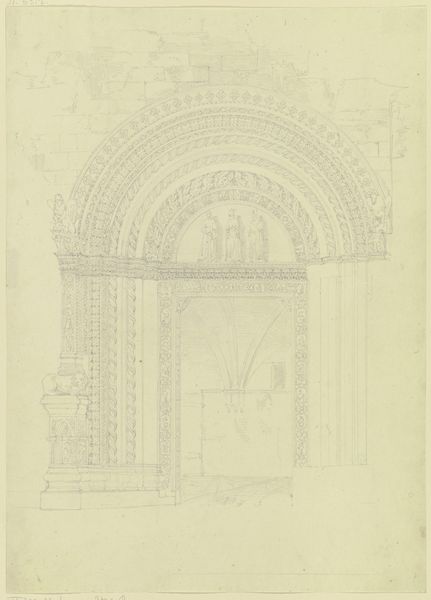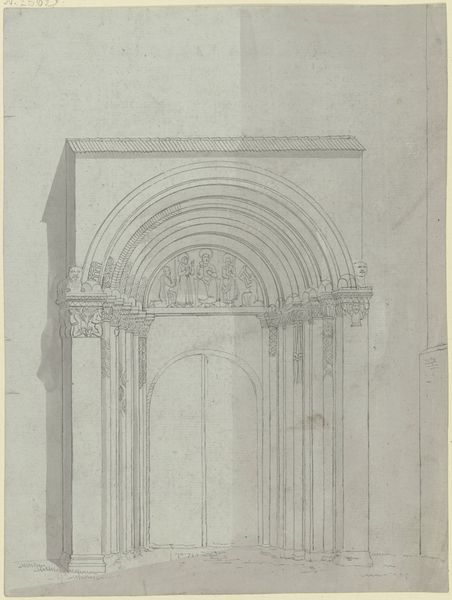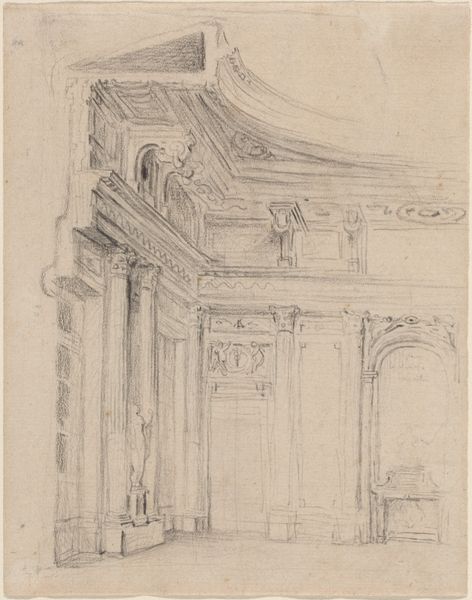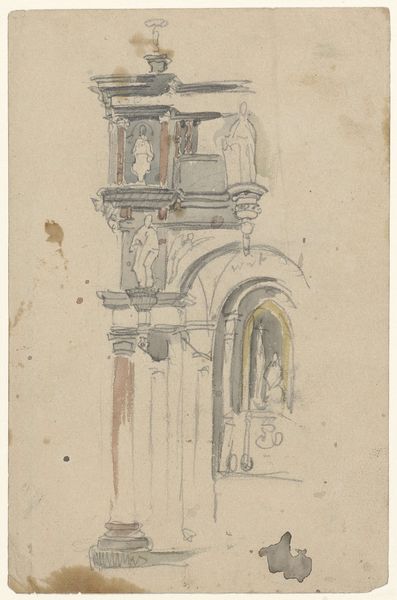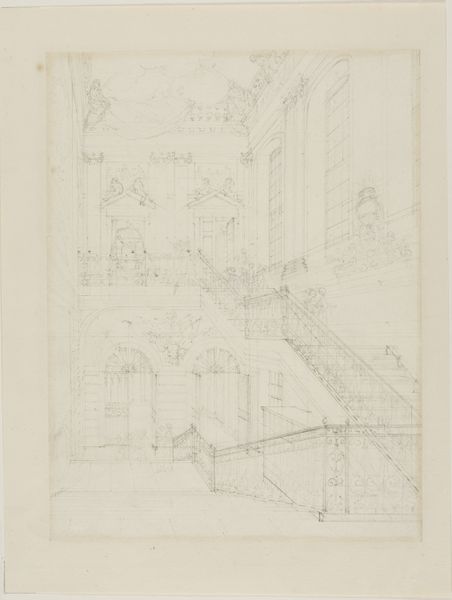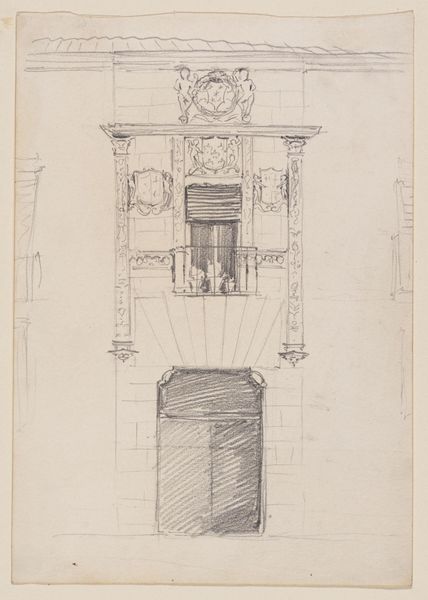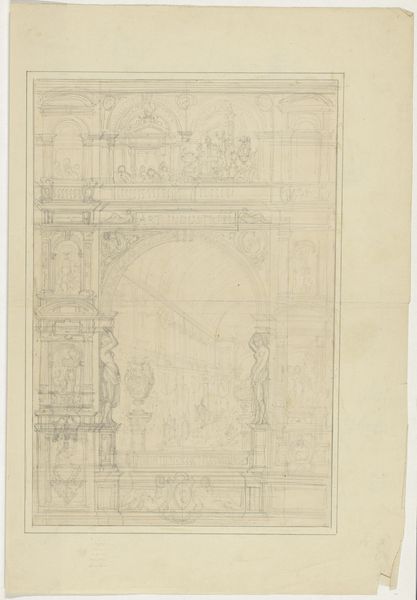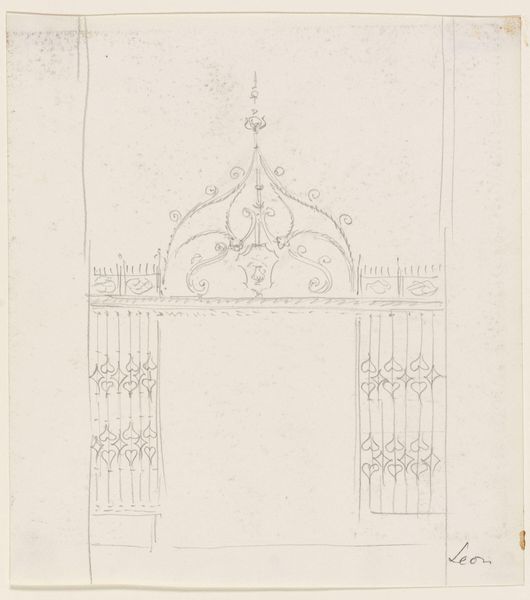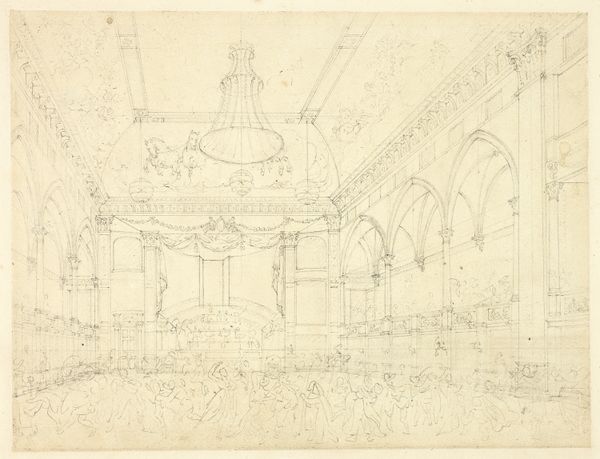
Reich verzierter Innenhof eines Wohnhauses mit Loggia 1829
0:00
0:00
drawing, paper, pencil, architecture
#
drawing
#
neoclacissism
#
paper
#
form
#
pencil
#
line
#
cityscape
#
architecture
Copyright: Public Domain
Editor: So, here we have Friedrich Maximilian Hessemer’s "Richly Decorated Courtyard of a Residential Building with Loggia," made with pencil on paper in 1829. It feels unfinished, like a blueprint. What can you tell me about it? Curator: I see a clear demonstration of architectural design. Note the labor that would have gone into executing these ornate details in stone. Each line in this drawing anticipates a worker's hand. Consider the economic structures that support such elaborate displays of domesticity, even the clothes hanging out to dry signify labor, production, trade, and ultimately, consumption. What can we infer about the class and resources of those living here based on the materiality of the building and its adornments? Editor: That’s interesting. I was only looking at it formally. You’re making me think about who built this, who lived there, and how the materials came together. Does the style inform that as well? The Neoclassical elements? Curator: Precisely. The adoption of Neoclassical motifs speaks to an aspiration toward order, reason, and perhaps a connection to a perceived glorious past. But that aspiration has to manifest in physical materials, requiring quarries, transportation networks, and skilled artisans. Consider the drawing itself; pencil on paper. What does that choice of materials suggest about its purpose, its accessibility, and its intended audience? Is it a luxury item, or a readily reproducible plan? Editor: I see it now; every aspect relates to resources and labor. I never thought about Neoclassicism in terms of materials and manufacturing before. Curator: Art doesn't exist in a vacuum. Exploring its materiality roots us in the concrete conditions of its making and use. Consider the act of drawing itself, the skill of the draughtsman—a type of labor often overlooked when we admire the final design. Editor: It makes me wonder how many other "fine art" works are connected to industrial production in ways I haven't considered. Curator: Exactly! It prompts us to think critically about value—not just artistic, but economic and social value as well. A new way of appreciation.
Comments
No comments
Be the first to comment and join the conversation on the ultimate creative platform.


